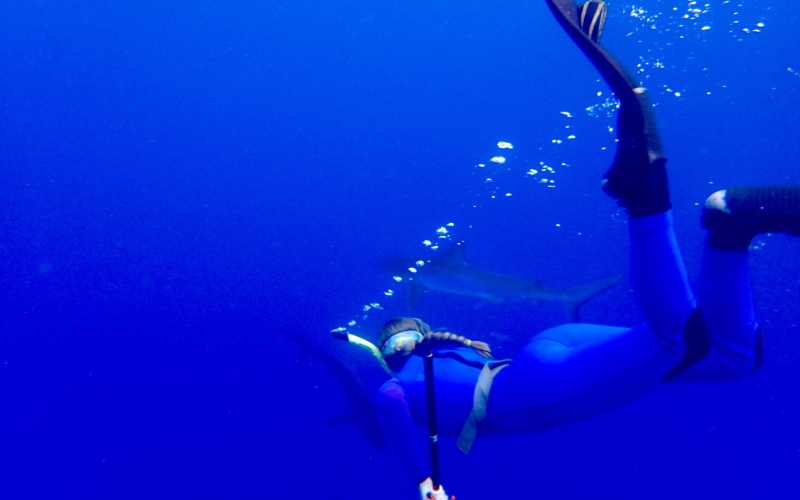Fifteen minutes into the open ocean from Oahu’s north shore the great Pacific rolled beneath a gray sky. The warm, moist air was smooth and smelled of salt and diesel fumes from the boat’s rumbling motor. The motor puttered to a hush as Nick secured the bowline to the mooring and the sound of light wind returned to our ears. Around and below us the ocean stretched forth, rich and solid. Within her, gray shapes passed below.
Category: homepage feature all science
Hotspot for Fishes! Researchers Find More Than Half of All California Fish Species in La Jolla
A new study by Scripps Institution of Oceanography, UC San Diego, marine biologist Philip Hastings and colleagues reveals that over half of the fish species found in California waters have been found in the immediate vicinity of the La Jolla neighborhood of San Diego.
The research team used specimens collected over several decades to document the diversity of fishes in and around the region’s marine protected areas (MPAs) and diver surveys to quantify the abundance of kelp forest fishes.
Hungry Bear: A Circle of Eating
 The thin branches of a huckleberry tree[1] fluttered slightly, then shook unexpectedly; teardrop green leaves brushed each other with a soft rustling as their delicate homes shifted up and down. A moment of stillness, then the rounded head of a black bear appeared, following a sniffing wet nose towards the dark, round berries.
The thin branches of a huckleberry tree[1] fluttered slightly, then shook unexpectedly; teardrop green leaves brushed each other with a soft rustling as their delicate homes shifted up and down. A moment of stillness, then the rounded head of a black bear appeared, following a sniffing wet nose towards the dark, round berries.
De-Oxy What Now?
Most people think of climate change in terms of warmer average global temperature, melting glaciers and more extreme storms. But what about the oceans? Carbon polluted into the atmosphere also enters the oceans and is making them more acidic. Heating is also occurring in the oceans which can stress organisms and cause them to shift their distribution patters. Heating has another effect: deoxygenation. To find our more watch the deoxygenation video that I put together with friends and colleagues to shine a little light on the issue.
Can Ocean Temperatures Aid Disaster Relief?
The El Niño Southern Oscillation (ENSO) is a natural climate cycle of fluctuating ocean temperatures and changing storm patterns over the tropical Pacific and is the dominant interannual signal of climate variability, affecting weather patterns worldwide. The two extreme phases of ENSO are El Niño and La Niña, which influence severe weather events like hurricanes, flooding, and drought.
For California, an El Niño year often yields rain, but how does it affect the rest of the world?





